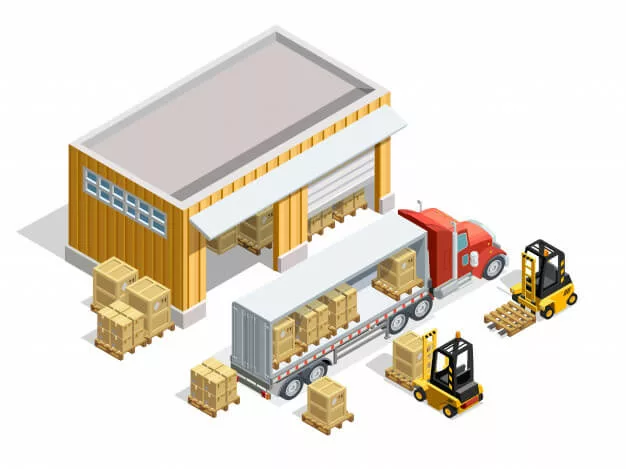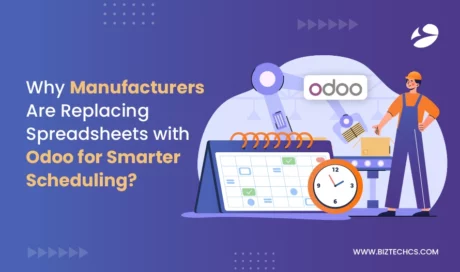IoT asset tracking has enormous potential. Whether you use trackers for agriculture, supply chain, construction, or mining; an asset tracking IoT solution can improve the overall efficiency.
No wonder it’s expected that there will be 267 million asset trackers by 2027. To stay competitive, businesses would leverage IoT for tracking and managing assets overall.
Before we start talking more about IoT-enabled asset tracking, let me tell you, the IoT asset tracking market will triple from 20 million to 70 million by 2022, a study by mobile experts.
Keep reading to see the full potential of the IoT tracking system.
Here’s what the blog covers:
Asset Tracking: A Shift Towards IoT?
As we know, supply chains are now continuously growing. This makes it difficult for us to deal with the intricacies of the complexity. They are heading towards technology-driven solutions, specifically IoT to track assets accurately.
“Supply chains are becoming more global by nature and you can’t wait until someone arrives to know what condition the asset is in, or if something went wrong on the way”, said Thomas Fuerst, head of WING marketing at Nokia.
Data collected from IoT-based sensors on devices can bring a real-time understanding of the asset. To do so, it is necessary to focus on IoT devices programming. This means, along with location, they should be able to track every movement of the asset such that every action has defined accountability.
Let’s say your factory relies heavily on raw material deliveries. A delay in the shipment can hamper your business on a large scale. With IoT devices connected on the shipment, you can know the exact location. If it’s headed in the wrong direction then you can guide the shipment in the right way. You can take appropriate actions such as – cancel the shipment, or buy it from another source to keep the supply chain schedule on track.
Not only will the device help you track the shipment location, but multiple sensors on the packages, transport vehicles, and in the driver cabinet will help collect data. This data includes the shipment condition, how long the shipment remained in a truck or at the port, and more. This data is useful for invoice disputes, insurance claims, and to understand the process you need to improve business efficiency.
So, this was like a gist of IoT…
Now, let’s see more about asset tracking IoT solutions.
Advantages of IoT Asset Tracking
As we know, asset tracking is necessary for your business. IoT tracking system can offer a range of benefits such as:
-
- Cost ReductionDo you know that cargo theft costs more than $30 billion annually in the US alone?A slight improvement in reducing theft by using sensors and trackers can save billions.By embedding trackers on assets, you can avoid asset loss. With the help of asset tracking IoT solutions, you can ensure that nobody moves your assets without authorization. It is possible to even get the asset’s exact location if it’s stolen or lost.Overall, the automation in tracking workflows reduces all the manual tasks, saves replacement costs and time required to track the asset using the phone or in-person.
- Faster Response TimeWith IoT, you can set up alerts and notifications for major events and issues. This in turn increases the response time.Let’s say that you get a notification that the shipment delivery is not possible at the given time. In this case, you can instantly contact the driver and work out a solution.Another scenario: a sensor on manufacturing equipment detects that the machine is not working properly. It can generate an alarm and alert the respected person about the asset fault, intending for an immediate asset check. The inbuilt-alerts can help managers take appropriate action whereas predictive analytics can forecast delays before they happen, thereby reducing any disruption in the business workflow.
- Streamlined OperationsWith an asset tracking IoT solution, you can manage thousands of assets from one location. You can re-route the fleet, recall damaged products or replenish supply chains through your smartphones from anywhere in the world. You can plan asset maintenance using predictive maintenance. This will assist you in case your asset requires maintenance. To streamline it further, you can automate the entire asset-related processes along with tracking.The best way to make the asset maintenance process more efficient is by leveraging IT operations using artificial intelligence. AI can help you identify patterns and anticipate asset maintenance requirements before they occur, drastically reducing manual labor and costs. This will further streamline the asset tracking process and reduce the time taken to resolve any issues.Let’s assume that a part of your asset has failed and requires immediate attention. An asset tracker will detect the error in real-time, and notify you about the failure. It will even update the system engineer about the replacement, and predicting the next step. It will check the availability of the part in stock. If it’s not available, it will automatically send a purchase request to the supplier so that when the system engineer comes up, they don’t have to wait for the part to arrive.
- Rich InsightsTracking statistics such as – asset delivery time, the frequency with which customers use your product or service, common issues that lead to multiple asset failures, the machinery condition, etc., in real-time would be difficult. However, with IoT, you can automate it all. Valuable insights also have the potential to increase revenue streams. 79% of supply chain leaders using IoT for asset tracking record higher revenue growth than their counterparts.
- Improve Customer Experience
Around 89% of companies today are competing over better customer experience. IoT-driven asset tracking allows collecting data, storing it on the cloud, and then providing insights. Edge computing requires less bandwidth, limits cloud processing, and thus provides accurate information instantly.
Now that you know about the potential of IoT asset tracking let’s see if it’s the right option for your business.
Looking for solutions to enhance your business?
Also Read About: IoT Asset Management
Is Asset Tracking IoT Solution the Right Solution for You?

“Always think twice before you make a decision”, said a wise man. Adding to it, I would say, “Ask yourself these 3 questions before deciding for IoT asset tracking.”
- Does your organization have high-value items to protect? You can track every asset but if you have something valuable then go for IoT. Because tracking smaller items won’t provide the same ROI as the big and valuable items.
- Is losing an equipment a costly problem for you? Maybe you are into a kind of cargo business where theft is more common. And the reason you’re looking into IoT tracking devices to find the lost items. The advice would be to first find how much time your team spends searching the asset and then based on analysis, figure out your options.
- Would your business benefit from having real-time asset data? As you know, it is possible to configure sensors to track location and monitor asset and environment conditions.
For example, if you want to keep the food in transit at certain temperatures; you can set alert notifications to monitor the conditions.
So, what’s your answer?
If it’s a YES for all these three, let’s go further.
Dig in to know the technological workflow.
Technologies Driving IoT Tracking System
Traditionally, businesses relied on different manual methods such as barcode or inventory for tracking assets. But currently, that’s not feasible considering the growing demand and complexity of the business. By combining IoT and other technologies, you can streamline the process and improve efficiency.
You can use different technologies for an IoT tracking system. The most common are:
- Beacon/BLE Bracelet
- RFID tags
How Asset Tracking Technologies Work
- Asset Tracking using Beacon/BLE BraceletThe IoT-enabled asset tracking solution comprises transmitters, i.e. Beacon/BLE Bracelet and receivers, and an IoT Hub. Here, the transmitter is a compact BLE (Bluetooth Low Energy) device installed on an object. The device broadcasts a radio signal that’s readable by any smartphone, for example. At every instance, it provides a real-time signal to the IoT Hub that collects all the location information and transfers it to the IoT Platform, i.e. the cloud database. Beacons/BLE bracelets come with additional sensors like accelerometer or temperature for tracking sensitive objects.
- Asset Tracking using RFIDRFID tags use passive RFID (radio frequency identification) technology to track assets. Passive means that RFID tags don’t broadcast a signal on its own. The RFID reader detects the asset equipped with an RFID tag. The RFID reader then passes the information to the IoT Platform, i.e. cloud database updating the asset movement or any action related to the asset. RFID using IoT can provide more detailed information about the asset helping reduce failure and improve efficiency.
Wondering what could be the right technical solution for your business? We can help you choose a system that works best for you.
Components of IoT Tracking System
No matter what technology you use – tag readers, blockchains, eSIMs, all IoT asset tracking systems must include these elements:
- Tracking DevicesThe shape, size, and form of the tracking device or sensor may vary based on the use case and the asset. Sometimes, it may serve one purpose such as tracking the location, or other times, it may have multiple functions such as monitoring asset conditions along with the location.
- ConnectivityYou need to connect different tracking devices. Thus, you need reliable network access everywhere you deploy tracking devices.
- Management PlatformAlong with device connection and data collection, you’ll also need a way to remotely manage connectivity, monitor device locations, and access device analytics, in short, an IoT platform.
Include all these and it’s done!
Amazing! How these tiny sensors with wireless connectivity can do all the work.
Industry-Specific Use Cases for IoT Asset Tracking
IoT asset tracking can benefit more than just fleet managers and asset tracking products including, but not limited to the following:
- Manufacturing Companies
 In manufacturing industries, IoT-enabled Asset Tracking controls the overall manufacturing process and reduces workload by automatic and reliable tracking of assets during all the production phases. It also monitors all the complex functions in real-time to detect potential error and ensures if the entire process is going well.
In manufacturing industries, IoT-enabled Asset Tracking controls the overall manufacturing process and reduces workload by automatic and reliable tracking of assets during all the production phases. It also monitors all the complex functions in real-time to detect potential error and ensures if the entire process is going well.
- HospitalsBy attaching tags with doctors or staff, hospital management can record the entry and exit. Along with that, administrators and facility managers can have accurate information about the location of doctors or staff in the hospital. Moreover, you can attach tags with highly valuable medicines and machinery to keep a track of it.With automated alerts and notifications, it’s easy to dispatch the closet asset to the patient in need.
- Logistics Companies
 As soon as a vehicle enters the warehouse, the warehouse manager can identify the shipment and place it on the right platform. The same process applies to human resources and stillage. Forklifts used in the transfer come with sensors that direct them on the designated route with safety rules. The in-built navigation system provides current inventory and stock location data to shorten the searching process and ensure if assets are in a proper place.
As soon as a vehicle enters the warehouse, the warehouse manager can identify the shipment and place it on the right platform. The same process applies to human resources and stillage. Forklifts used in the transfer come with sensors that direct them on the designated route with safety rules. The in-built navigation system provides current inventory and stock location data to shorten the searching process and ensure if assets are in a proper place.
- Retail and TransportationIn the retail and transportation business, knowing the location of an asset is not enough; it’s also important to know the asset’s condition. For example, perishable food items might also have temperature and humidity equipped sensors in addition to location tracking tags.
- Educational
 In libraries and institutes, assets such as documents, papers, books, lab items require proper organization and labeling. There’s no better example than a chemistry lab. Reactive chemicals are always the question of worry. Real-Time Tracking Software collects actual data of the asset and prevents them from theft or any hazard. In libraries, the tracking sensors collect the books’ data, organize them, and prevent them from theft. Moreover, asset tracking in educational institutions improves borrow and return processes to shorten the waiting time and minimize the need for human interaction.
In libraries and institutes, assets such as documents, papers, books, lab items require proper organization and labeling. There’s no better example than a chemistry lab. Reactive chemicals are always the question of worry. Real-Time Tracking Software collects actual data of the asset and prevents them from theft or any hazard. In libraries, the tracking sensors collect the books’ data, organize them, and prevent them from theft. Moreover, asset tracking in educational institutions improves borrow and return processes to shorten the waiting time and minimize the need for human interaction.
- Maritime ShippingFor cargo shipments on high seas, IoT-enabled asset tracking tags can help inform distributors and customers about container status, condition of the items in the container, and when it arrives at the destination. It can also help track down the stolen shipment.
- Rentable Bikes

We have seen the market for rental bikes and scooters is expanding in urban centers. By adding tracking tags, companies can prevent loss and theft, as well as manage inventory, maintenance, and local legal compliance issues.
And the list goes on…
The applications for IoT-enabled asset tracking are as many as there are industries to apply.
Interested in IoT Asset Tracking?
Real-time information for asset management, tracking, and maintenance using IoT is becoming a must-have; IoT connects every dot. It will help you connect remotely, see asset status, institute security measures, and automate the entire business operations.
Need help with an IoT Asset Tracking solution for your business? Our team will provide insights enabling you to embark on your IoT journey.
Ask your questions, and get your tailored solution ready!
All product and company names are trademarks™, registered® or copyright© trademarks of their respective holders. Use of them does not imply any affiliation with or endorsement by them.
5083
06 Oct, 2020
13 min read
5083
06 Oct, 2020
13 min read






291

924

888